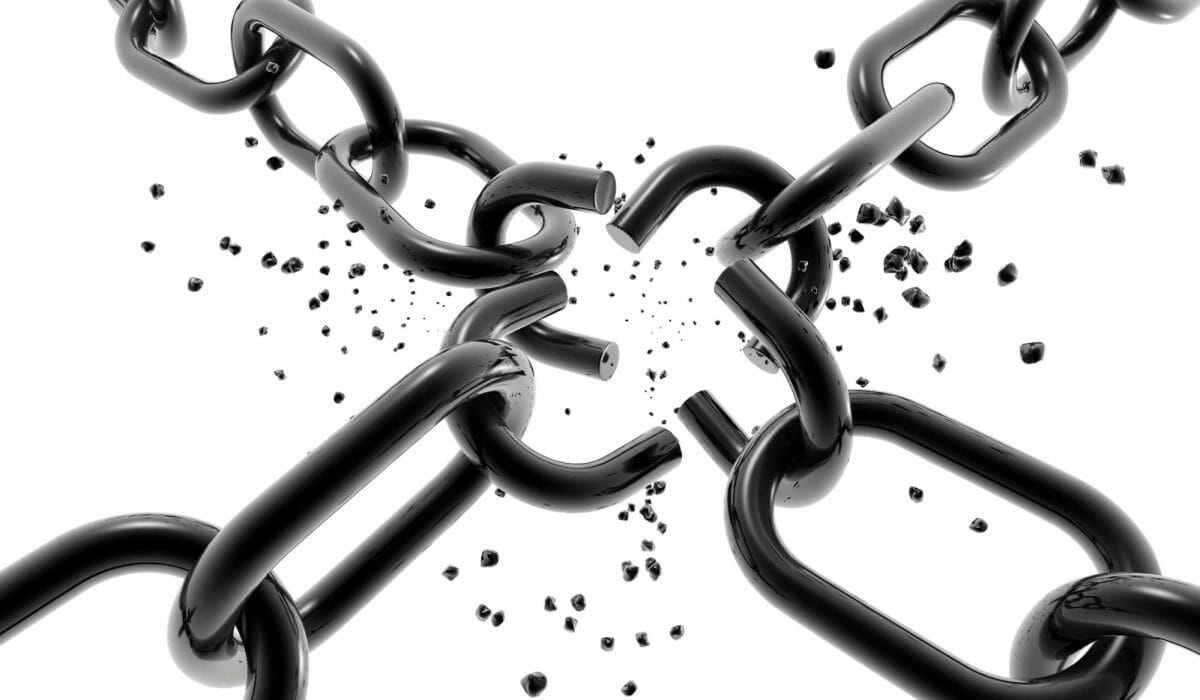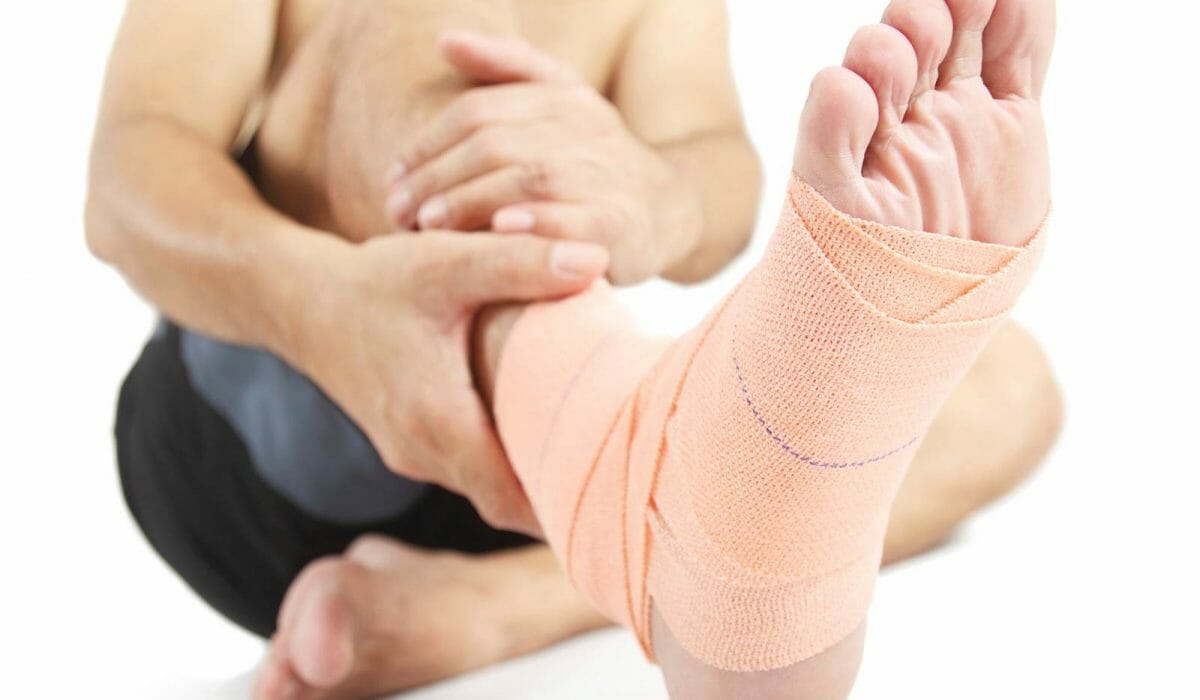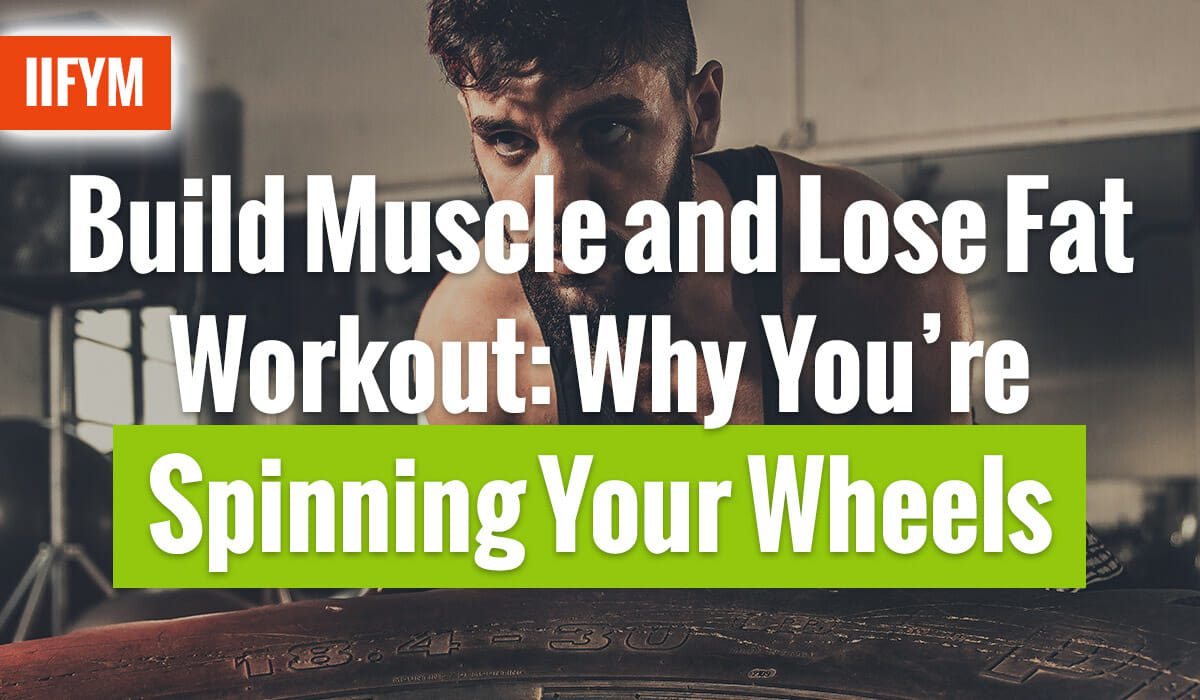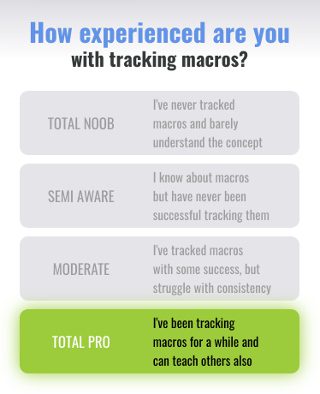“I want to build muscle and lose fat at the same time.”
This is a phrase that is all too common in the fitness industry. If you ask most people what their goals are when they start training, this is usually the first phrase that comes up. It’s one of the most common concepts our IIFYM coaches hear from clients as well.
Unfortunately, and ironically, this situation does not truly occur nearly as prevalent as it is said. As a general rule of thumb, it is best to focus on either the goal of gaining muscle or losing fat at a given time (pick your overall goal and begin today with the IIFYM calculator). Trying to simultaneously build muscle and lose fat usually, results in spinning your wheels.
Normally showing little to no real progress actually transpire. There are some select and rare scenarios where this feat is indeed possible, however, these are more of an exception to the rule rather than the rule itself. I’ll go into detail on those specific scenarios later, but for now, let’s take a look at it why this lofty goal is usually not recommended.
Calories In, Calories Out
To put this as simple as possible… You need to be in a caloric surplus to gain muscle and you need to be in a caloric deficit to lose fat. Every person has their own caloric set point that will allow them to maintain their weight; eating above this intake will make that person gain weight while eating below this point will make them lose weight.
Instead of going through all of the guesswork to figure out your ideal macros and caloric intake, have one of our coaches create your Macro Blueprint
Using random numbers as examples with a hypothetical person, let’s say that someone needs to eat 2500 calories to maintain their current weight. Excluding rare situations, they would need to be eating more than 2500 calories if they wanted to gain muscle, whereas they would need to be eating less than 2500 calories in order to lose fat. I don’t think it takes a nuclear physicist to see that eating above and below 2500 calories simultaneously is an impossible feat.

One Process At a Time
That person could eat right at 2500 calories a day in an attempt to both build muscle and lose fat, and if they were just beginning a new training program and/or IIFYM plan after not doing so for years it’s possible they would be successful in doing so for a little bit. Yet, over time their body would soon adapt to the training stimulus and this magical phenomenon of accomplishing both of these goals simultaneously would soon come to an end.
This miraculous process is known as newbie gains or ‘noob gains’. However, this process does not last forever.
For the vast majority of people, and especially for people who already have months of training under their belt, it is advised to not attempt to build muscle and lose fat at the same time. Focusing all of your efforts on a single goal at a time instead will truly help you optimize the results since you’re doing all that you can to work towards a specific outcome. Our coaches here at IIFYM.com have always gotten the best transformations for our clients whenever we commit to one process at a time rather than trying to both build muscle and lose fat simultaneously.
Jack of All Trades, Master of None
Have you ever seen those 2 in 1 shower products that claim to contain both shampoo and conditioner properties? While the thought of saving extra time may excite some, I’ve always viewed it with skepticism. Since the process of shampooing and conditioning are so different, how could one product effectively do them both to their best ability? I would think that a product whose sole purpose was one or the other could do a much better job with those individual aspects since it can focus all of its efforts on that specific goal.
It seems by trying to accomplish two different processes simultaneously that require different mechanisms, you’re not reaching the full potential of either goal. A jack of all trades if you will. Since the process of shampooing and conditioning are so different, how could one product effectively do them both to their best ability?
I would think that a product whose sole purpose was one or the other could do a much better job with those individual aspects since it can focus all of its efforts on that specific goal.It seems by trying to accomplish two different processes simultaneously that require different mechanisms, you’re not reaching the full potential of either goal. A jack of all trades if you will.
It’s not quite a direct analogy, but the same concept sort of applies when you try to build muscle and lose fat simultaneously. While trying to build muscle and lose fat at the same time may be possible for a short duration of time in select scenarios, you would have much better results towards either one of those goals if you focused completely on one of them at a given time rather than both.

Don’t Spread Yourself Too Thin
Do you think the fastest sprinter in the world got that way by training for both cross country and sprints? And vice versa? Or in a non-fitness example, did the best guitarist in the world get that way by practicing both the guitar and drums equally trying to be great at both? In both of these examples…
Most likely not. Once again these aren’t the best comparisons out there, but they prove the point that if you want to achieve the best results possible in regards to a specific goal in the shortest and most efficient time possible, then you need to solely focus on that and not try to accomplish two different things that require different approaches in order to maximize their given potential.
Eating At Maintenance
Now I will say that if someone is happy with the amount of muscle development they already have or if they are an athlete training for performance, then there is absolutely nothing wrong with eating at your caloric maintenance in your IIFYM plan.
The prominent take home piece of advice is simple; focus on one overarching body composition process at a time and commit fully to it.
However for people who are trying to make major visual changes to their physique, then you are compromising your overall results if you try to build muscle and lose fat at the same time.
Spinning Your Wheels = No Results = No Motivation
I’ve known a lot of people that have attempted the task of trying to build muscle and lose fat simultaneously; they experience a little success in doing it at first and then think it’s something that can always be done. In result, they just end up spinning their wheels most of the year without truly gaining much muscle or losing much fat. It can really be discouraging to many people because they are working hard in the gym and feel like they’re eating right, yet the visible results are not reflecting that.

Break The Cycle
This is kind of similar to the situations of people who always seem to be dieting year round; they eat incredibly strict during most of the week then binge so bad on the weekend that it basically negates everything they did in the days before. They end up suffering from all of the negative consequences of dieting, but none of the great ones. It’s a vicious cycle. Years go by and no progress is really being made despite still working hard in the gym and ‘trying’ to diet most of the time.
It’s no surprise people lose motivation and fall off altogether whenever this happens. Our coaches at IIFYM always set up our clients for optimal success by giving them an IIFYM plan that has a clear goal in mind and is specifically designed to make that happen as efficiently as possible.
Build Muscle and Lose Fat? How?
In this article, I’ve mentioned a few times about some of the rare situations where you actually can build muscle and lose fat at the same time. But what exactly ARE these specific circumstances, though?
It’s time to break this insanity and jump-start fat loss! Let one of our coaches build your ultimate diet approach with a Macro Blueprint
As previously mentioned, if someone is new to beginning a workout program and/or IIFYM plan after not engaging in exercise for either years or their whole life, then it is definitely possible that they can indeed build muscle and lose fat at the same time for a little bit.
Newbie Gains
This miraculous process is known as newbie gains or ‘noob gains’. However, this process does not last forever. The exact duration that this can occur may vary for people based on their exercise background and other confounding factors, but regardless it isn’t something you should always expect to happen.
Using my own previous experience and IIFYM clients who I have worked with as examples, I would say on average this period where you can both build muscle and lose fat could last anywhere from ~1-4 months. If someone has literally never gone to the gym in their entire life or played many sports growing up in combination with starting up an IIFYM plan, then their ‘noob gaining’ period will be extended compared to someone who used to work out, but just hasn’t in a few years or so.

Coming Off An Injury
Besides people who haven’t regularly exercised in years, our coaches have noticed that the only other situation where someone can build muscle and lose fat at the same time is when someone is forced to take extended time off from the gym.
‘Newbie Gains’ have a short half-life, it’s time to have a professional build you a Macro Blueprint so you can create lasting change in your physique
Whether this is due to injury, surgery, illness, etc. even if they were a consistent exerciser in the past. When they first get back into the gym, and especially if they are eating a balanced diet whether it’s IIFYM or not, it’s not uncommon at all to experience another period of ‘noob gains’ for a little while where they can both build muscle and lose fat, though it usually won’t last nearly as long as it did the first time when they were truly brand new to training.
…And That’s It
These are basically the only times (excluding performance enhancing drugs) where you can both build muscle and lose fat at the same time, so unless you fall into one of the above categories, you would achieve much better results if you focused your efforts on one or the other at a given time.
In Conclusion…
Hopefully, now you can understand why working to build muscle and lose fat at the same time isn’t the most efficient path to achieving the results you desire. The biggest take-home piece of advice is simple; focus on one thing at a time and commit fully to it. If you are trying to gain muscle, consistently eat in a caloric surplus for an extended period of time until you are happy with the amount of muscle you have put on, then cut.
If you are trying to lose fat, consistently eat in a caloric deficit for an extended period of time until you are happy with the amount of fat you have lost, then build. By concentrating on one thing at a time you can optimize the results for that specific goal, then set your sights on optimizing the results of the other goal after that. This in combination with a solid IIFYM plan will lead to the best overall results in the long term and the most noticeable visual changes.



